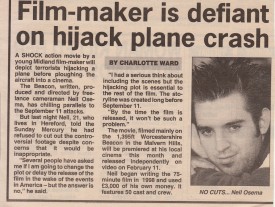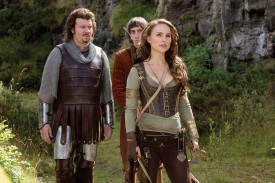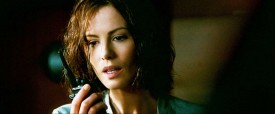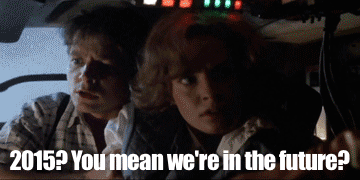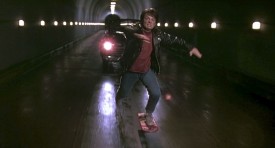 Last week I published the best tips I culled from day one of the 2015 Big League Cine Summit. To complete the set, here are the top tips from day two, starting with that legendary teacher of cinematography, Shane Hurlbut, ASC. Since Shane is so good at sharing his knowledge on the Hurlblog, I’ve only listed a few tips from him; I strongly recommend you check out his site for many, many more gems.
Last week I published the best tips I culled from day one of the 2015 Big League Cine Summit. To complete the set, here are the top tips from day two, starting with that legendary teacher of cinematography, Shane Hurlbut, ASC. Since Shane is so good at sharing his knowledge on the Hurlblog, I’ve only listed a few tips from him; I strongly recommend you check out his site for many, many more gems.
Shane Hurlbut – “Delivering Storytelling Impact with Light, Lens and Camera”
- On the visual grammar of Crazy/Beautiful: controlled camera moves represent Jay’s controlling mother.
- Shane likes to use the work of stills photographers as inspiration.
- He added extra 400W sodium vapour fixtures to the existing 100W sodium vapour streetlights for night exteriors in Crazy/Beautiful.
- He used a “damaged key” in Crazy/Beautiful to represent Kirsten Dunst’s flustered state. It’s messy, doesn’t quite reach both eyes.
David Vollrath – “Motivated Lighting”
- “I don’t want to light their faces and bodies specifically. I like to light the space.” – Harris Savides
- Stand where your subject will be to see what reflective objects are affecting your lighting.
- Tabletops can be great bounce-boards for toplight. Maybe put muslim or paper on the table to enhance it.
- Look for things to motivate light: windows, practicals, overhead fixtures, sconces, etc.
- Once you’ve lit the space, it will become clearer how to light the faces.
- Work with the art department in preproduction to make sure you get the practicals you need.
- Flag your other sources off your practical so that excess light isn’t falling on them and washing them out.
- You can use the reflection of a softbox to create a nice shine on a dark surface or even on a face.
- A roll of duvetyne armed off a C-stand makes a fair stand-in for a 4×4 floppy flag.
- “Beadboard” is just another name for polyboard. (I genuinely didn’t know that!)
- Other bounceboards include foamcore and showcard.
- Use Source 4 Leikos to fire into your bounce, because they’re easily cut and focused. They’re cheap to rent too.
- It’s easier to rig a bounce card overhead than a softbox or a kinoflo.
- Plus Green and Minus Green gels – to match or correct fluorescents – are useful in subtle 1/8th flavours.
- “Lighting is in the gripping.” Taking away light can be more effective than adding it.
- A “cocktail” is a layering of multiple gels.
- A simple black card over a shiny piece of furniture can cut bounce and bring back contrast.
- Hazers add great atmosphere, but they raise the fill level. To see shafts of light, use a dark background.
Caleb Pike – “Everything You Need to Know About Lenses”
- A good set of primes will last you decades.
- Lens choice affects: 1. Field of view, 2. Depth of field, 3. Compression (amount of perspective).
- Use compression to isolate a subject, or to crop out equipment.
- Use wide lenses to open up a space, exaggerate expressions or get the most out of camera moves.
- Longer lenses are more flattering for close-ups. Short lenses can distort the face unpleasantly.
- Don’t always shoot with your aperture wide open. Choose an appropriate depth of field for your story.
- Generally it’s best to keep your aperture the same throughout a scene.
- Avoid non-constant aperture zoom lenses for video work.
- Primes (fixed focal length lenses) are generally faster, cheaper, lighter and sharper than zooms.
- Cine lenses are heavier than stills lenses, do not breathe (zoom slightly when focusing), and have fixed filter rings.
- Cine lenses have hard stops on the focus rings, so you can set focus marks on the lens.
- Cine lenses have longer throws on the focus rings, so that follow focusing can be more precise.
- Wide cine lenses have less distortion than their stills counterparts.
- Passive lens adapters are cheap and simple; smart adapters maintain the electronic connection for autofocus etc.
- Lens boosters can solve cropping problems caused by using a lens with a sensor size it’s not designed for.
- Throttle adapters are passive adapters with neutral density fader filters built in.
- Caleb’s budget lens recommendations:
- Nikon 35-70mm f3.5 macro
- Olympus 50mm zuiko f1.4 and 1.8 versions – sharp, with long focus throw – around $30
- Canon 40mm f2.8 pancake prime
- Nikon 100mm F2.8 E series – around $99
- Canon 28-80mm F2.8-4.0 L series – well built, very sharp – around $500
Matt Workman – “Camera Moves That Matter”
- A camera “hand off” is a move that starts focused on one thing and then transitions to focus on another.
- A classic establisher might start on a mysterious insert then pull back – “hand off” – to reveal the scene.
- Spielberg, Scorsese, Luhrmann, Singer and Bay all use camera hand-offs frequently.
- Camera moves increase production value and can cover multiple story beats in one shot.
- Doing the same thing in cuts reduces your audience’s understanding of the scene’s geography.
- Crane-ups give you a privileged view, a sense of power.
- Write down the beats of the scene, then storyboard or previz. All departments can benefit from the previz.
- Beware of boring bits in the middle of camera moves. Is it better to do it in cuts so you can speed it up?
- Use Autodesk Maya for previz. Build a library of accurate grip equipment models.
- Check out Matt’s other site http://www.cinematographydb.com which uses previz tools to illustrate other DPs’ set-ups.


